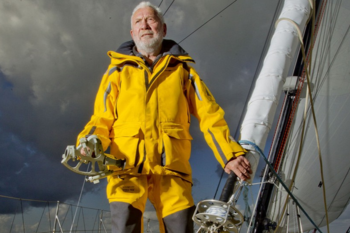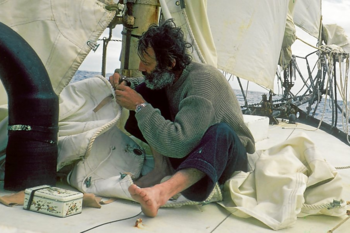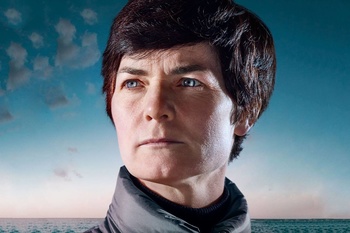During another call with the race organizers, Jean-Luc van den Heede elaborated on what happened to his boat during the storm in early November.

It is now clear that this was more serious than first thought, as the yacht did not capsize, but nearly capsized over the bow, «after crashing into the» waves.
Van den Heede prepared in advance for the worst, closed himself in the cabin like in a bunker, locked the hatch and put away all his belongings. When the boat abruptly came to a halt and its stern rose into the air, the impact threw the yachtsman across the cabin. He found himself on the bulwarks, surrounded by all sorts of gear. Some water got into the cabin, all things were tossed about. The mess was such that even a week later he still couldn't find some of the items.
In a good scenario in such situations, the boat tilts on its side not very much and soon regains its normal position. But this time the mast plunged into the water, damaging the anchoring of the battens.
Strangely, no matter how she was toppled, the bodega, which van den Heede had set up onboard, seemed to be intact. At least, he didn't mention it in any way.
Over the coming weekend, van den Heede might have to weather another storm. And two more may be waiting for him near Cape Horn, which the Frenchman has 1300 nautical miles to go.
The yachtsman has repaired the mast as far as he can, securing the lower shrouds on the outrigger above them, and is cruising at 5.3 knots. The main problem for him now will be that he needs to sail a strictly following course so as not to damage the mast more. However, while the approaching storm is unlikely to be good news, it will allow van den Heede to sail to Cape Horn without deviating for the foreseeable future.
For now, the French yachtsman is rejoicing in the sunshine. He says it peeked out for the first time since the beginning of the month on November 14.
«Time to dry everything»," he notes optimistically.
While van den Heede is recharging his vitamin D reserves by sunbathing, the Dutchman Mark Slats miles away took on 30 liters of drinking water the previous day. To overtake the Frenchman at the finish line, Slats needs to keep going at one knot more speed at all times. At 8 a.m. UTC on November 14, the Dutchman was only 0.4 knots faster. However, he will now have a slight advantage as the price forthe «returnof» van den Heede from the Chichester class is a penalty of 18 hours, which will be added to his finishing time.
Apparently there will be a bit more information on how Slats is doing in the near future. He reported that one of his transmitters was having problems due to corrosion, but should now be working properly again.
The race leaders seem to be the only ones making significant progress towards the finish line in recent days. At 1500 nautical miles behind Slats, off New Zealand, Estonian Uku Randmaa, British Susie Goodall, American Istvan Kopar and Finn Tapio Lehtinen respectively are suffering from lack of wind. They do, however, try to make the best of it.
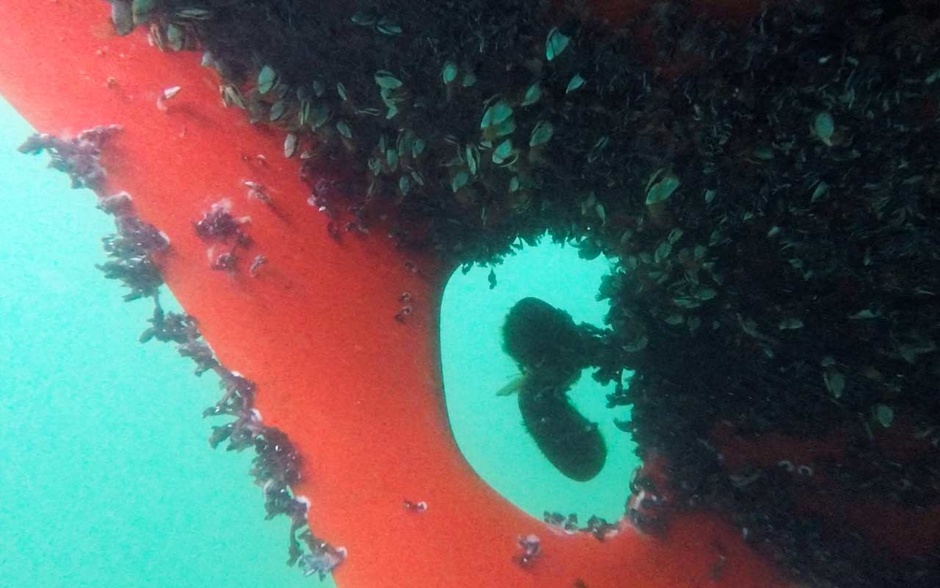
Randmaa noticed that after clearing the bottom of the boat of an overgrown carpet of sea delicacies Susie Goodall began to catch up with him, and decided to follow the girl's example. The Estonian had forgotten to bring a wetsuit, so he used a suit from the rescue kit. It was very uncomfortable to wear a wetsuit and the lack of a diving mask - but Randmaa said he managed to do about half of the job. Goodall herself tried to kiteboard in the meantime, but she didn't have enough wind to even do that.
Tapio Lehtinnen also cleaned the bottom of the boat from uninvited passengers. His shellfish situation is the same as Randmaa's, which means he loses at least one knot in speed because of them. In Hobart, Tasmania, he has already debugged the spar and rigging, such as checking the halyard fastening on the mast top. Now it's up to the sea ducks.
Istvan Kopar has his hands full as well. There is no way he can cope with the breakdown of the auto-rudder. During the stopover in Hobart he almost cursed his poor preparation for the race and his poor start. Due to multiple breakdowns he doesn't even know the exact time and has to literally do everything at random.
«I feel closer to Joshua Slocum, who first tried a solo circumnavigation of the globe in 1895-1898, than I do to the 1968-1969 Golden Globe Race winner Sir Robin Knox-Johnston»," Kopard confessed at the time.
In addition to technical problems, the American has a problem with fresh water. According to him, the water in African Ghana is cleaner than the one in his tank on board. Perhaps this is the reason for serious health problems: the nails on his hands turn black and start to peel from his fingers. The cause may not be water, but a fungal infection or fungus on the yacht, but that doesn't change much.
The Australian Mark Sinclair and the Russian Igor Zaretsky are finally approaching Australia 2,500 nautical miles away from the other competitors from the west. True, so far they too have fallen into an almost doldrums zone. Sinclair has already caught the home radio waves and is happily listening to the home airwaves. Most recently, he passed the point from which Loïc Lepage was evacuated in late October.
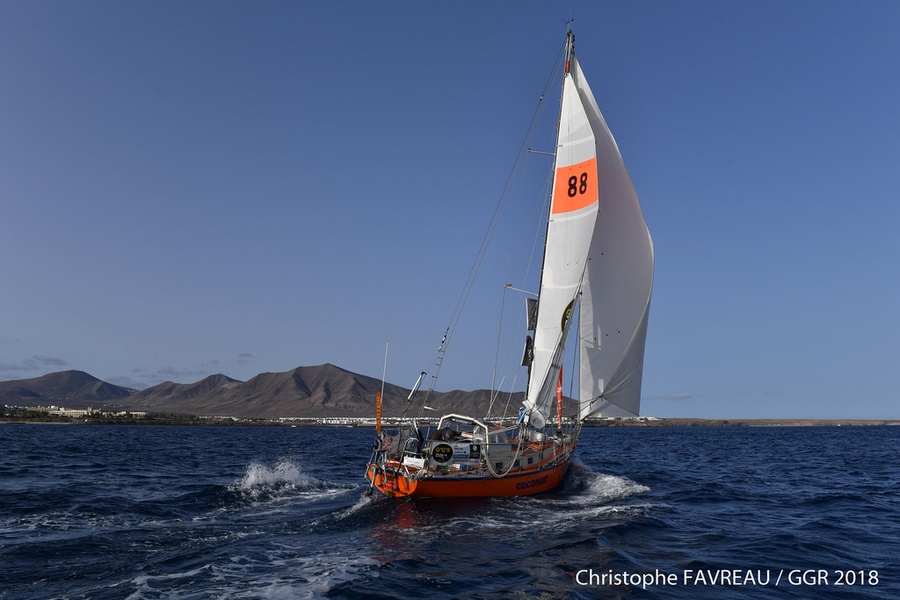
When Tapio Lehtinen was the last out of Hobart, Sinclair expected to arrive at the checkpoint on December 15. He would likely move up to the Chichester class from then on. He had only 45 litres of water left in his freshwater tank and would definitely need to stop by port and replenish supplies before sailing across the Pacific.
Igor Zaretsky had not seen the sun for a long time and therefore could not use a sextant and thus could not determine his coordinates.
«We had to determine the coordinates by counting. But here everything is complicated. Without a mechanical lag, Igor was left behind when he passed the Cape of Good Hope. Add to this ocean currents and high magnetic declination», - reminds the official group of the yachtsman on Facebook.
The Russian has thoroughly worked on his rigging during the calm weather and now is waiting for the weather to change. Judging by the forecast, it will take place within the next 1-2 days.
However, Zaretskyy does not know what to do with the mollusks occupying the bottom of his yacht.
«Overgrowth is different. I sailed across the Atlantic for six months. So, islands... some barnacles. There's a whole bush! It's the first time I've ever seen anything like this. And it's a tough bush! One should cut it down, like with an axe», - he said during a radio communication.
«Clearing this» forest could take a yachtsman a week. In addition, it is not yet clear where it will be possible to do it: the bay near the island of St. Paul in Tasmania, which Zaretsky saw, is part of the protected area, so it is impossible to leave there organisms alien to this region.



